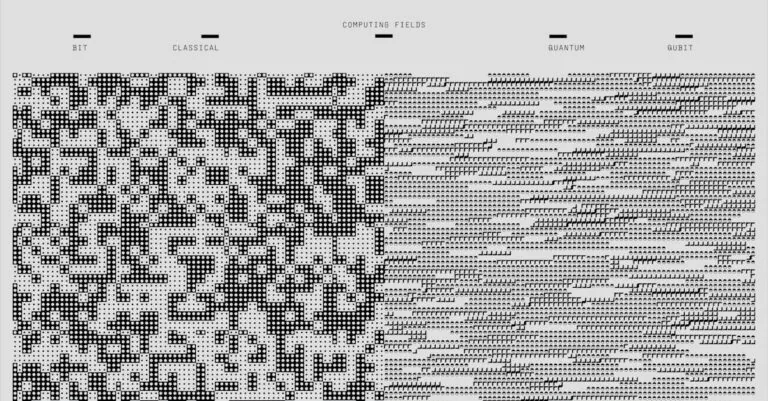Imagine a world where design isn’t just a human endeavor but a collaboration with cutting-edge technology. Welcome to the realm of generative design, where creativity meets algorithms and the ordinary transforms into the extraordinary. This innovative approach uses computer algorithms to explore countless design possibilities, ensuring that every project is not only functional but also a work of art.
Table of Contents
ToggleWhat Is Generative Design?
Generative design combines human creativity with advanced technology. This collaborative approach allows designers to explore numerous possibilities through computer algorithms.
Definition and Overview
Generative design refers to a design methodology that uses algorithms to create various design options. Designers input specific parameters, such as materials, manufacturing methods, and constraints. Algorithms then process these inputs, generating innovative solutions. Professionals in fields like architecture and product design increasingly adopt this technology. The process results in designs that often surpass traditional methods in both function and aesthetics.
Key Principles
Generative design operates on several key principles. First, it emphasizes user-defined constraints that guide the algorithm’s output. Second, exploration of a vast design space occurs through variations on parameters. Third, multiple iterations allow for optimization, addressing performance and functionality. Fourth, the utilization of advanced technologies, such as artificial intelligence, enhances creativity. Lastly, collaboration between human intuition and machine efficiency defines the process. By applying these principles, designers achieve results that align with specific needs and parameters.
Applications of Generative Design
Generative design finds extensive applications across various industries, notably improving efficiency and innovation.
Architecture and Construction
In architecture, generative design enables architects to optimize space usage. Algorithms analyze site constraints, allowing for innovative building shapes that maximize light and views. Multiple design iterations provide solutions that align with sustainability goals. Structures designed through this approach often withstand environmental challenges better than traditional methods. Notable examples include the use of generative design in creating complex, efficient facades that balance aesthetics and functionality.
Product Design
Product design benefits significantly from generative design technologies. Designers leverage algorithms to explore numerous options, enhancing ergonomic features and minimizing material waste. This method produces lighter and more durable products, benefiting both manufacturers and end users. Successful applications include athletic footwear, where customized fits cater to individual user needs. Additionally, generative design aids in designing intricate components for electronics, improving performance and user experience.
Automotive and Aerospace Industries
Generative design transforms the automotive and aerospace industries by enabling advanced lightweight structures. Manufacturers can create parts that maintain strength while reducing weight, leading to improved fuel efficiency. Aircraft components designed through generative processes meet stringent safety standards while minimizing material usage. Noteworthy projects include the creation of lattice structures in automotive frames, blending form and function. These advancements lead to the development of vehicles that perform better on the road and in the air.
Benefits of Generative Design
Generative design offers numerous advantages across various fields. This innovative approach reshapes how designers tackle challenges by introducing unique solutions.
Enhanced Innovation
Enhanced creativity springs from generative design’s ability to explore unconventional options. Designers gain access to multiple iterations generated by algorithms, sparking fresh ideas. Collaborative efforts between human intuition and machine capabilities lead to groundbreaking results. Innovative products emerge, often exceeding traditional design limitations. Industries embrace this approach to drive new concepts that align with modern demands.
Cost Efficiency
Generative design significantly lowers production costs through optimized material usage. By analyzing design parameters, it identifies the most efficient methods for manufacturing. Reducing waste becomes possible while maintaining the desired quality. Time savings arise from automating design processes and minimizing manual adjustments. Companies realize a return on investment as they streamline operations and enhance productivity.
Sustainability
Sustainability benefits represent a cornerstone of generative design. Eco-friendly materials and practices become integrated into design parameters, promoting responsible resource use. Designs achieve lightweight structures that reduce energy consumption during manufacturing and transportation. Companies actively contribute to lower carbon footprints through efficient designs. Overall, generative design fosters a balance between innovation and environmental care.
Challenges and Limitations
Generative design presents unique challenges and limitations that designers must navigate. Understanding these obstacles is crucial for effective implementation.
Technical Barriers
Technical barriers often hinder the full potential of generative design. Software complexity can pose challenges for users unfamiliar with advanced algorithms. Computational power requirements frequently escalate, necessitating expensive hardware for processing extensive design iterations. Data integrity issues may arise, affecting the quality of generated designs. Limited access to high-quality materials can restrict experimentation and innovation. Legacy systems might not support integration with generative design tools, leading to operational inefficiencies.
Design Control
Maintaining control over the design process presents its own set of challenges. Designers can feel overwhelmed by the numerous options generated, making it difficult to identify the best solutions. User-defined parameters might unintentionally limit creativity if not carefully optimized. Collaboration between human intuition and machine efficiency can sometimes result in designs that stray from initial vision. Furthermore, ownership of the generated designs can create disputes, as intellectual property considerations come into play. Balancing innovative freedom with intentional design choices remains a critical aspect of this approach.
Future Trends in Generative Design
Generative design continues to evolve, driven by advancements in technology and industry needs. Specific trends indicate a shift towards greater integration of AI and machine learning, alongside evolving industry standards.
AI and Machine Learning Integration
AI and machine learning play increasingly vital roles in generative design. These technologies enable algorithms to analyze vast datasets, improving design outcomes significantly. Designers utilize AI to predict performance outcomes, leading to optimized solutions. Enhanced automation reduces the workload for human designers, allowing them to focus on creative aspects. Efficiency improves as AI systems learn from previous designs, continually refining their output. Overall, combining machine learning with generative design fosters innovation and accelerates the design process.
Evolving Industry Standards
Evolving standards in the design industry reflect the growing significance of generative design. Many sectors adopt new guidelines to incorporate these advanced methodologies. Organizations prioritize sustainable practices and eco-friendly materials in their designs, pushing for a greener future. Collaborative efforts among professionals and industries ensure best practices are shared and implemented. Standards are set to guide the ethical use of generative design, particularly concerning intellectual property rights. These developments create a streamlined framework that benefits both designers and consumers.
Generative design is reshaping the landscape of creativity and innovation across various industries. By blending human insight with advanced algorithms, it opens up a realm of possibilities that challenge traditional design methods. The ability to explore multiple iterations while adhering to specific constraints fosters a new level of creativity.
As technology continues to evolve, the integration of AI and machine learning will further enhance generative design’s potential. This evolution not only optimizes design outcomes but also promotes sustainability and efficiency. Moving forward, the focus on ethical practices and environmental responsibility will ensure that generative design remains a vital tool for future innovations. Embracing this approach will empower designers to tackle complex challenges and create solutions that are both functional and aesthetically pleasing.






